7. The Seven Samurai – Fumio Hayasaka
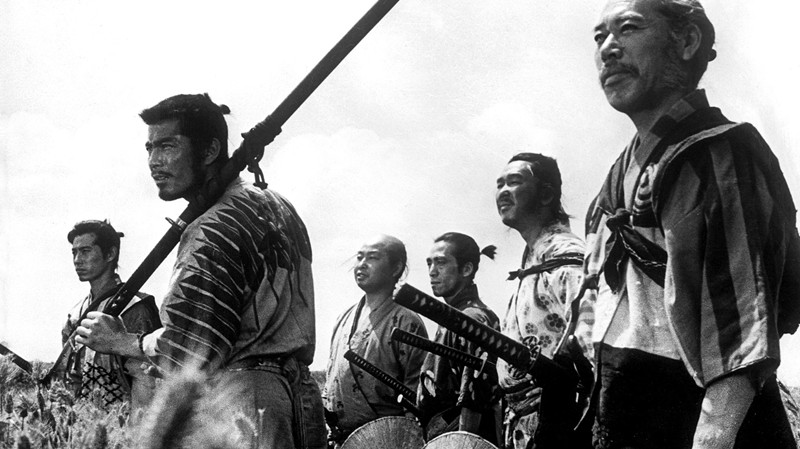
This Akira Kurosawa epic is as masterpiece of cinema and the soundtrack is a vital part of it. Hayasaka had worked with Kurosawa in some movies previous to The Seven Samurai, but his soundtracks were not as powerful as this one. His Rashomon theme was even a pastiche from the famous Bolero by Ravel. But in this classic, Hayasaka reached a new level of musicality.
The film starts with a strong percussion work that invades the screen with tension and anxiety. It’s pure Japanese music combined with soundtrack composition intensity. The whole soundtrack is a perfect blend of Japanese melodies played with western instruments. The highlights include the funny excerpts that always play when Toshiro Mifune’s character does his clown work on screen.
6. Psycho – Bernard Herrmann
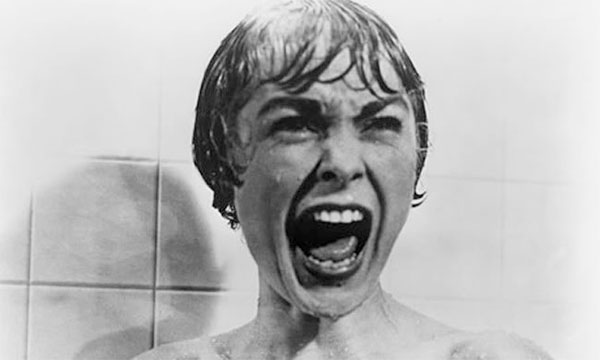
Bernard Herrmann and Alfred Hitchcock partnership produced a great number of masterpieces in cinema history. Hermann was a cantankerous and adamant character. When asked by a journalist about the importance of his own music in Hitchcock music he answered that “Hitch was responsible for 60% of the movie, the other 40% I completed with my music”.
In the case of Psycho that is probably true. When the movie was done, Hitchcock gave two specific instructions to Hermann in order for him to compose the soundtrack: to create background music to the scene where Janet Leigh is driving her car with the stolen money, and to not create any background music for the shower scene.
The first instruction was followed by Herrmann but the second one he vehemently ignored. Stubborn as he was, Herrmann created very descriptive music for a scene that was already descriptive. And it worked perfectly. The violins’ squeak created the creepiest sound possible. Herrmann’s idea was to create a sound similar to the chirp of birds evoking the taxidermist’s habits of Norman Bates. Psycho’s soundtrack became the prototype of scary sounds, influencing scores such as John Williams’ Jaws.
5. Spellbound – Miklos Rozsa
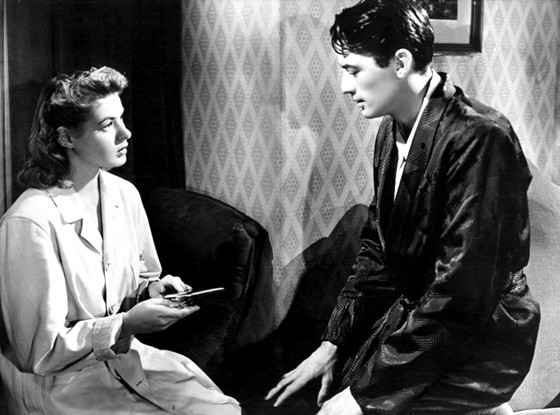
Miklos Rozsa produced in 1945 two of the best soundtracks ever recorded: The Lost Weekend and Spellbound. The first one is more impressionist whereas the latter is expressionist. In common both have the use of an unusual instrument: the Theremin.
Spellbound enters this list because it was composed first. Rozsa scores were per se revolutionary. He didn’t work with easy melodies or clichés but tried to create harmonic variations to express different feelings. In Spellbound, Rozsa used the Theremin in a hallucinatory scene, along with Salvador Dali images. The soundtrack was so impressive that influenced a young Jerry Goldsmith to pursue a career as a movie composer.
4. Forbidden Planet – Louis & Bebe Barron
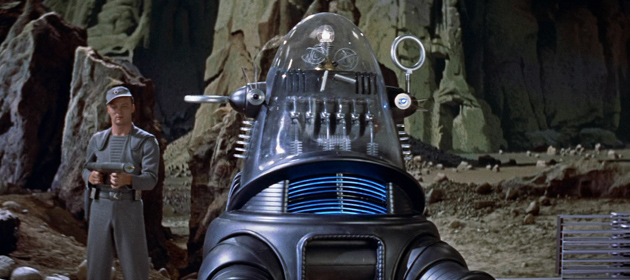
Louis and Bebe Barron were predecessors of modern audio technology. They had one of the first electronic studios in America which helped avant garde artists such as John Cage to make recordings. They also helped writers such as Henry Miller and Aldous Huxley to record their works on tape.
Initially the couple was assigned to create only 20 minutes of sound effects for the movie but the producers were so satisfied with the result that decided to give the whole movie score for them. Their composition process consisted of creating using electronic circuits called the “ring modulators”. On the album sleeve notes of the Forbidden Planet soundtrack, Louis and Bebe explain:
We design and construct electronic circuits which function electronically in a manner remarkably similar to the way that lower life-forms function psychologically. [. . .]. In scoring Forbidden Planet – as in all of our work – we created individual cybernetics circuits for particular themes and leitmotifs, rather than using standard sound generators. Actually, each circuit has a characteristic activity pattern as well as a “voice”. [. . .]. We were delighted to hear people tell us that the tonalities in Forbidden Planet remind them of what their dreams sound like.
Created in 1956, this soundtrack is considered to be the first electronic score ever. It’s incredible to notice that only in the middle 70s artists like Tangerine Dream and Giorgio Moroder started to compose electronic scores and after that electronic music became a major part of the soundtrack scope.
3. A Streetcar Named Desire – Alex North
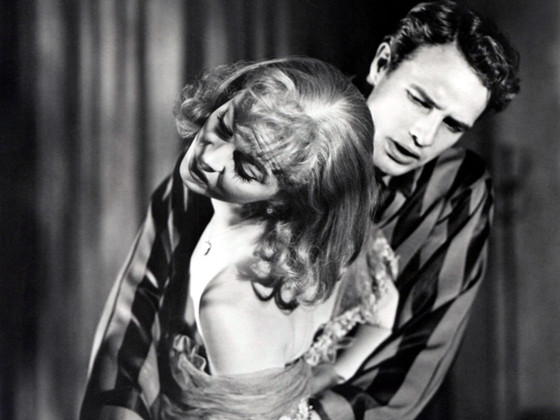
Nowadays it seems a little bit obvious to talk about movie scores with jazz influence. But that wasn’t the case in 1951 when Alex North revolutionized the cinema with his score for A Streetcar named desire. North was the first movie composer to use jazz elements and he did it with only 12 musicians, dismissing the 80 members orchestra from Warner Bros. North didn’t do it for budget reasons. He did it because he knew that only 12 musicians were necessary to express the languid Tennessee Williams’ story.
It wasn’t 100% pure jazz. It was a classical structured score with essential elements from jazz. In a time where composers had a lot of influence from European music (Miklos Rozsa, Franz Waxman and Bernard Herrmann to name a few), North put the American art of Jazz in the center.
2. Planet of Apes – Jerry Goldsmith
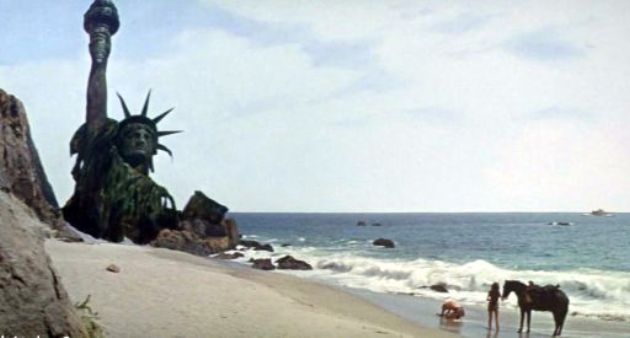
Jerry Goldsmith is one of the greatest innovators in the soundtrack realm. Chinatown, The Omen, Alien and Total Recall all have different elements from the “patterns” of soundtracks. But when it comes to innovation Planet of Apes is certainly the most revolutionary.
Written completely in an avant garde style it contained features such as: an Echoplex (an electric device similar to a delay) which made instruments sound like they were in a cave, a Brazilian cuíca (percussion instrument very popular in Samba) which can produce a very eerie sound (Airto Moreira used the cuíca in the electro Miles Davis phase in the 70s), brass instruments without their mouthpieces and bass clarinets clacking their keys.
Besides the unusual use of instruments, the composition style of the soundtrack was much more similar to classical composers such as Schoenberg (atonalism), Stravinsky (intensity) and Edgar Varèse (elements of silence and primal percussion). The result is a claustrophobic mass of sound, completely unique and different from all soundtracks that came before.
1. The Good, The Bad and The Ugly – Ennio Morricone
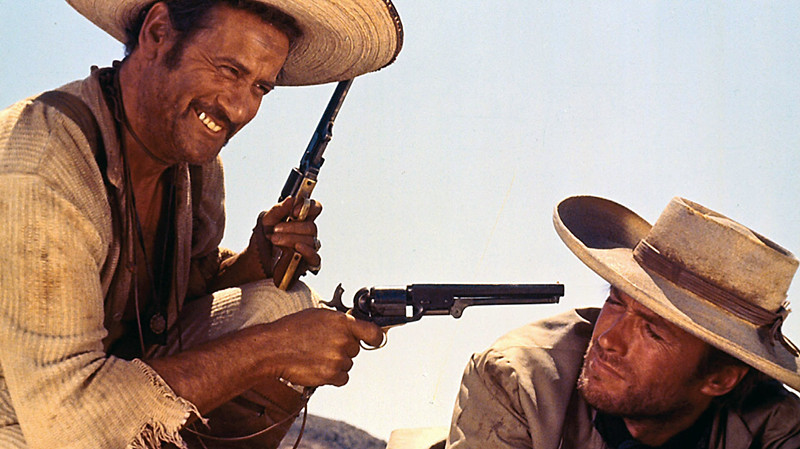
The partnership between Sergio Leone and Ennio Morricone started in For a Fistful of Dollars, but their artistic peak came in The Good, The Bad and The Ugly. Western Spaghetti subverted both the western genre (themes, heroes and values) and the soundtrack for western (which used to be associated with flamboyant orchestrations).
Leone created a realistic universe in which there weren’t clear distinction between good and evil, and violence was abundant and gratuitous sometimes. Morricone added his musical magic to the recipe: surf rock guitars, whistles, unusual instruments such as Ocarina, and his famous trademark: the vocalize, using the human voice as an instrument.
The famous cemetery scene was built up according to the music, a perfect association between music and image. More than subverting the genre, Morricone created a new genre and that’s why his score is the most revolutionary ever.